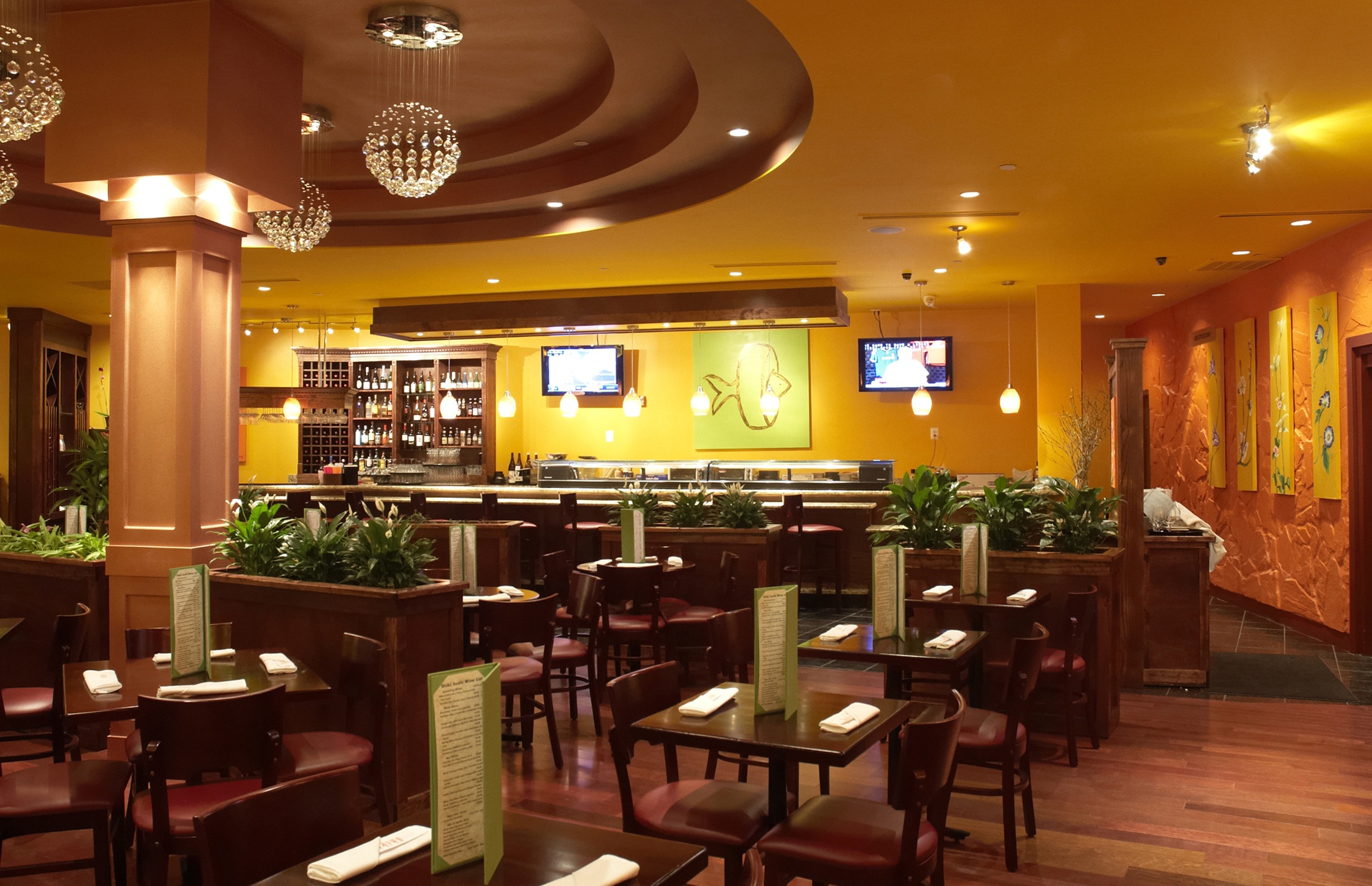If you compare the restaurant industry trends of the year 2017 with the trends in 2018, you will see a vast difference. With the gradual change in consumer habits and eating out trends, the restaurant industry in the US is also undergoing significant changes as restaurants strive hard to keep up to the customer demands. As more number of Americans are stepping out to eat, or ordering in, and with the rise of the disposable income of the millennial generation, the restaurant industry in the US is witnessing a continued growth.
However, the industry is also rife with challenges. In January 2018, the rise in the minimum wages added to the already high labor costs in the US. High-interest rates, rising restaurant costs, and stiff competition in the restaurant industry pose a threat to the small players in the restaurant space.
US Restaurant Industry Trends To Look Out For In 2019
In this article, we take a look at the top restaurant industry trends that are shaping US restaurant space.
1. Influence Of Social Media
Social media has completely taken over all our lives, and the restaurant business is no different. Restaurants are increasingly striving to serve food that is Instagram-worthy so that it would be posted and shared by customers on social media. Food bloggers and micro-influencers on social media have also become a dominant part of the restaurant marketing trends. Aesthetic presentation of food has become a prerequisite and restaurants
This has led restaurants to focus on the visual appeal of the food now more than ever, and the social media trend is likely to continue as well as grow further in 2019 as well. The effect of Instagram has been so significant, that restaurants are also focusing on the restaurant design and are coming up with concepts to stand out from the competition and lure customers in.
2. Innovative Menu Choices And Concepts
Considering the stifling competition in the restaurant industry in the US, customers have no dearth of choices when it comes to choosing a restaurant. Customers in the US and primarily the millennial generation is adventurous and willing to try new things.
Thus, restaurants have no resort but to come up with innovative menu items or unique restaurant themes and concepts to attract customers.
3. Growing Popularity Of Healthy Food
Veganism and healthy eating habits are no longer considered to be weird in fact; it has become more mainstream than ever. There has been a 600% growth in the number of people who identify themselves as a vegan in the US; also, the number of healthy eaters has significantly increased.
More and more restaurants have started identifying themselves as only vegan dinners or healthy eateries.
According to Forbes, consumers want healthy food and are ready to pay more for it. 2018 has seen a growth in the restaurants selling vegan/healthy food as people are getting more aware and conscious about the food they are eating. It is essential for you to match up with this trend if you already have a restaurant operating you need not to renew the entire menu instead you can add a few vegan/ healthy options and open the doors for the health conscious/vegan people.
Locally sourced ingredients and farm-to-table concepts are witnessing a rising demand. Farm-to-table as a concept is receiving widespread acceptance as consumers believe that locally sourced is equal to fresh. Chefs are now directly working with farmers to source only the best and the freshest produce.
Restaurants are also experimenting with on-site farming and including little herb gardens that grow herbs and certain food ingredients themselves.
4. Technology To Optimize Operations
While technology in restaurants is not a new concept, restaurant operators are now increasingly looking to not just employ basic tech such as the billing software, but seeking sophisticated technology to cut down food and labor costs. Automated and quick billing processes, strong stock and inventory control, smart Customer Relationship Module, coupled with real-time reporting and analytics will lead to optimized operations and reduced costs.
Added to this, third-party integrations is the biggest restaurant technology trend that is in popular demand as restaurant operations seek to bring all their tech and operations on a single platform
Online ordering and payments will continue to grow in 2019, as the world is increasingly going digital. The consumer demands, stiff competition, and adverse conditions are all propelling the industry to resort to technology to attract customers and improve their margins.
5. Employing Data For Improved Service And Customer Engagement
Restaurateurs are now capitalizing on the power of data to deliver enhanced customer service. Collecting customer contact details is no longer just being used to send promotional SMS and emails. Instead, customer data such as their eating preferences, ordering history and behavior are all documented into the POS integrated CRM, which is used to understand customer behavior.
This not only helps restaurants to analyze the overall consumer demands but aids the service as well. Waiters and servers can view the entire customer details right on a handheld restaurant-ordering system that records the previously ordered items and any special comments and requests such as an allergy or aversion to an ingredient. This helps the servers deliver a stellar guest experience and improves customer retention.
6. Fast Casual Restaurants
Fast-casual restaurants have been emerging as the favorite choice for restaurants and is one of the hottest US restaurant industry trends that has made its mark in the recent years, and is expected to continue to grow in 2019 as well. Fast-casual restaurants are eateries that are a hybrid of quick-service restaurants and full-service dining restaurants. They promise the speed and the convenience of quick-service restaurants while delivering the quality and service of casual dining restaurants.
A shift in the consumer demands, as people are increasingly looking for better eating options at a relatively lesser price, and innovative restaurant concepts coming up to beat the competition, have been the major driving factors behind the growth of fast-casual restaurants in the US. Although the growth of the fast casual industry has been slow, it has been steady, and the concept has definitely been established and accepted by the consumers.
7. Cloud Kitchens
High real-estate costs in the US and the overall increase in the restaurant costs are forcing restaurants to close down underperforming locations. Instead of leasing a high rental property at a prime location, smart restaurateurs are now operating delivery only restaurants or cloud kitchens. With the rise in online food ordering, cloud kitchens are actually turning out to be the smarter way of running a restaurant business.
The revenue in the Online Food Delivery segment amounts to the US $16,980m in 2018, and it is expected to show an annual growth rate (CAGR 2018-2023) of 7.5%, resulting in a market volume of US $24,345m by 2023.
Thus, restaurants are now ditching the brick and mortar business and increasingly eyeing cloud kitchens as the preferred business model.
Relatively low on investment and encompassing lesser risks, the number of delivery only cloud kitchens in the USA is expected to increase in the USA in 2019 steadily.
8. Environment Friendliness
Environmental sustainability is steadily creeping into the US restaurant industry. Banning of plastic straws and movements such as ‘Waste Not’ gathered much appreciation by the consumers and media alike.
It is no shock that the trend of waste management is catching up in the hospitality industry. Reducing waste not only helps restaurants cut down their food costs, but it is also a step towards a green initiative.
Roughly fifty percent of the produce in the US is thrown away; hence, people are coming up with innovations to manage waste.
An example of one such innovation is the ‘nose-to-tail’ cooking technique. In this cooking technique, restaurants try and find ways to use all the body parts of the animal for cooking. This helps manage the food wastage to some extent. Apart from this, restaurant operators are seeking the help of technology to control the food wastage. A strong stock and inventory system enables you to keep track of the inventory purchase and consumption and significantly reduces wastage.
The US restaurant industry is dynamic. Owing to the changing customer demands, extreme competition and challenging internal as well as external factors, restaurants constantly need to adapt and introduce innovation to stay in business.


















Keeping up with food trends is an easy way to find great new restaurants when traveling to a new city. Few trends like plant-based meat, healthy bowls have an important impact on the US restaurant industry. The article above has very well described the trends in the US, very well written. Good Read.